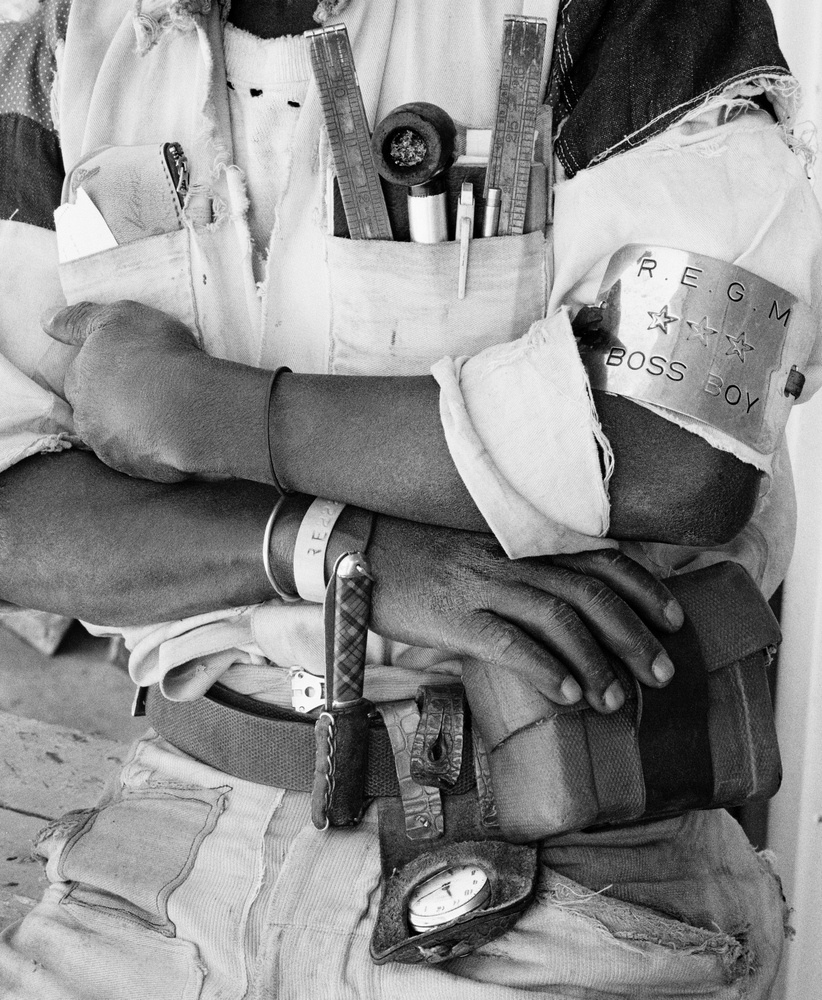David Goldblatt

In the gold mines of the Witwatersrand, the highest position a black worker could hope to hold was that of ‘boss boy’, the foreman to a gang of miners. The term itself was not one of rank but of subjugation – the authority of ‘boss’ undermined by the slight of ‘boy’ (a black employee was seldom afforded the dignity of ‘man’). Such was the perversity of apartheid, that it was present in the most commonplace words, that it bent the language to its oppressive will. ‘Boss Boy’ detail is a close-up of one such foreman, his uniform busied with badge, watch and pockets of stationery – with signs of hollow officialdom. Under apartheid, black mineworkers earned significantly less than their white counterparts and were disallowed from forming unions. “Weighed against gold,” Nadine Gordimer writes in On the Mines (1973), “the white man’s sweat is still considered of greater worth than the black man’s.”
b.1930, Randfontein; d.2018, Johannesburg
“I was drawn,” the late photographer David Goldblatt wrote, “not to the events of the time but to the quiet and commonplace where nothing ‘happened’ and yet all was contained and immanent.” A preeminent chronicler of South African life under apartheid and after, Goldblatt bore witness to how this life is written on the land, in its structures or their absence. Unconcerned with documenting significant historic moments, his photographs stand outside the events of the time and yet are eloquent of them. Through Goldblatt’s lens, the prosaic reveals a telling poignancy. Even in those images that appear benign, much is latent in them – histories and politics, desires and dread. His photographs are quietly critical reflections on the values and conditions that have shaped the country; those structures both ideological and tangible. Among his most notable photobooks are On the Mines (1973), Some Afrikaners Photographed (1975), In Boksburg (1982), The Structure of Things Then (1998), and Particulars (2003).